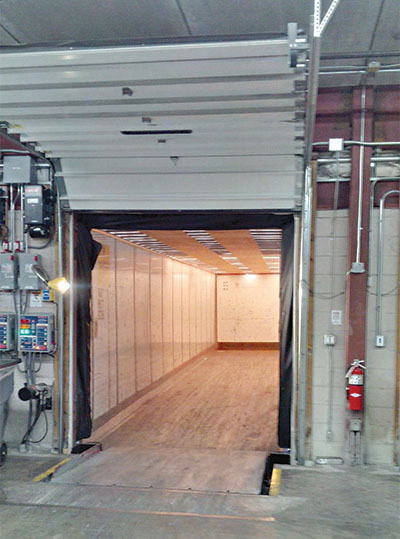Catania Oils upgrades vacant food warehouse with HVLS fans
The fans help lower the warehouse’s heating energy costs by more than of 400 therms per year.
Over the last seven years, Catania Oils, a family-owned vegetable, olive and blended oil products provider, experienced a surge in growth. The growth was so strong that the decided to expand its distribution operations into a nearby vacant 24-year-old food warehouse. Recently completed, Catania Oils now has 100,000 additional square feet of distribution center space for finished products, along with 20 dock bays to help manage its product shipments.
When the distributor first acquired the 1980s-era facility, the dock bays were in poor shape, as they had heavily used and damaged doors, faulty manual dock levelers and inappropriate trailer restraints. In addition, a low-clearance supplemental gas heater (above the loading dock area) presented a critical safety risk and had to be removed.
To help keep the dock area warm, Catania Oils added two 24-foot diameter industrial HVLS (high volume, low speed) fans to circulate the warm air generated by a primary gas heater, which was located far from any lift truck traffic. Dan Brackett, Catania Oils’ director of manufacturing and engineering, anticipates the HVLS fans will help lower the DC’s heating energy costs, with a projected decrease of 400 therms per year (equivalent to an annual savings of 400,000 cubic feet of natural gas).
Rather than just “fix” existing problems, the distributor, according to Brackett, “decided to pull out all of the old spring-loaded dock levelers and replace them with new vertical storing levelers, as well as other equipment,” including dock seals, trailer restraints and LED dock lights.
“We now have safety interlocks on all leveler master control panels that prevent a vertical dock leveler from being accidentally lowered and taking out a dock door or injuring an employee,” Brackett says. “The old doors were so damaged from lift trucks because the facility didn’t use vertical levelers or other protective measures.”
Dock doors now close tightly on the cement floor in the pit, rather than directly on a dock leveler. Therefore, there is no light penetration, resulting in better energy efficiency and protection from unwanted pests.
Brackett adds, “I know that because of the way the vertical leveler is designed, it will be much easier to maintain than our older, aging equipment.”
Entrematic
(866) 696-2464













